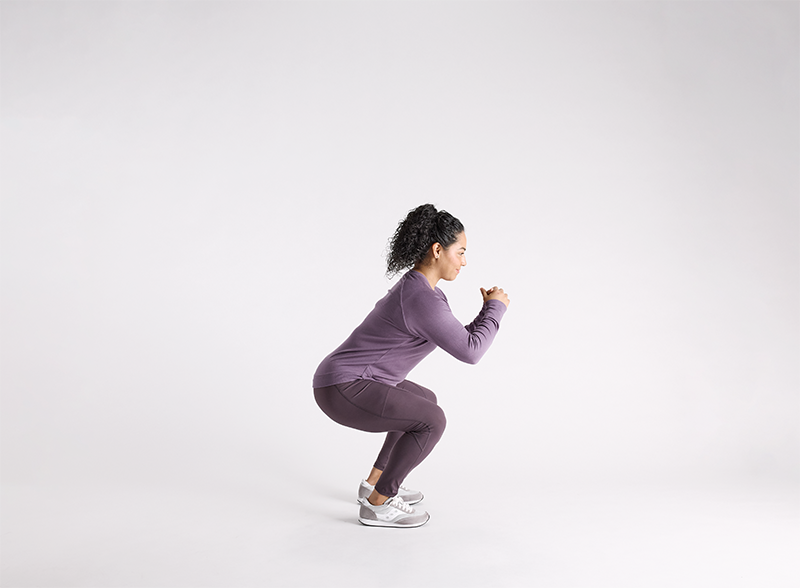Common Mistakes When Doing Squats

Image from: https://en-gb.hingehealth.com/resources/articles/squat/
Squats are a fundamental exercise in strength training, renowned for their ability to build lower body strength, enhance core stability, and improve overall functional fitness. However, performing squats with improper form can lead to inefficiency and increase the risk of injury. Understanding and correcting common squat mistakes is essential for maximising benefits and ensuring safety.
1. Allowing Knees to Cave Inward (Valgus Collapse)
One prevalent mistake during squats is the inward collapse of the knees, known as valgus collapse. This misalignment can place undue stress on the knee joints and connective tissues.
Correction: Focus on maintaining knee alignment over the toes throughout the movement. Strengthening the hip abductors and external rotators can help prevent this collapse. Incorporate exercises like clams and lateral band walks into your routine to enhance hip stability.
2. Rising Onto the Toes
Elevating the heels during a squat shifts the center of gravity forward, increasing stress on the knees and reducing engagement of the posterior chain muscles.
Correction: Ensure your weight is distributed evenly through the midfoot and heels. Keeping the heels flat on the ground promotes better balance and muscle activation. If ankle mobility is a limitation, consider incorporating ankle stretches and mobility exercises into your warm-up routine.

Image from: https://subiaco-physiotherapy.com.au/four-key-components-to-a-perfect-squat/
3. Insufficient Squat Depth
Not achieving adequate depth in a squat can limit muscle engagement and exercise’s effectiveness.
Correction: Aim to lower your hips until your thighs are at least parallel to the ground. This depth ensures comprehensive activation of the lower body muscles. However, squat depth should be adjusted based on individual mobility and comfort levels to prevent injury.
4. Allowing the Chest to Fall Forward
A forward-leaning torso during squats can indicate weak core muscles or poor thoracic mobility, leading to increased stress on the lower back.
Correction: Maintain an upright torso by engaging the core muscles and keeping the chest lifted. Incorporate core strengthening exercises and thoracic mobility drills to support proper posture during squats.
5. Overextending the Lower Back
Hyperextending the lower back at the top of the squat can lead to lumbar spine stress and potential injury.
Correction: Focus on achieving a neutral spine position throughout the squat. Engage the core muscles to stabilise the spine and avoid excessive arching. Practicing proper pelvic alignment can also help maintain spinal neutrality.

Image from: https://www.youtube.com/watch?v=U3HlEF_E9fo
6. Neglecting the Eccentric Phase
Rushing through the lowering phase of the squat can reduce muscle engagement and increase the risk of injury.
Correction: Control the descent by lowering yourself slowly and deliberately. A controlled eccentric phase enhances muscle activation and promotes better form. Counting to three during the descent can help maintain a controlled pace.
7. Improper Breathing Technique
Failing to coordinate breathing with movement can compromise stability and performance during squats.
Correction: Inhale deeply before initiating the squat to brace the core, and exhale as you push through your heels to return to the standing position. Proper breathing supports core stability and can enhance lifting performance.
8. Using Excessive Weight
Lifting weights beyond one’s capacity can lead to compromised form and increase the risk of injury.
Correction: Prioritise proper form over heavy loads. Gradually increase the weight as your strength and technique improve. It’s advisable to master bodyweight squats before progressing to weighted variations.
9. Neglecting Individual Anatomical Differences
Attempting to conform to a one-size-fits-all squat technique can lead to discomfort and improper form.
Correction: Recognise that factors such as hip structure, limb length, and ankle mobility can influence squat mechanics. Adjust your stance width and foot positioning to find a comfortable and effective squat form that suits your anatomy.
10. Ignoring Pain Signals
Pushing through pain during squats can intensify underlying issues and lead to injury.
Correction: Listen to your body and avoid movements that cause pain. If discomfort persists, consult a fitness professional or healthcare provider to assess and address potential problems.
By being mindful of these common squat mistakes and implementing the suggested corrections, you can enhance your squat technique, reduce the risk of injury, and maximize the benefits of this foundational exercise. Remember, quality of movement should always take precedence over the quantity of weight lifted.

References:
- DMoose. (n.d.). 15 Common Squat Mistakes You Make And How To Avoid Them. Retrieved from https://www.dmoose.com/blogs/training/15-common-squat-form-mistakes-you-need-to-avoid
- The Times. (2025, January). What not to do at the gym: 5 big workout mistakes. Retrieved from https://www.thetimes.co.uk/article/what-not-to-do-gym-workout-mistakes-02zl275zv
- Daily Burn. (2021). Squat Like a Pro: 8 Common Mistakes to Avoid. Retrieved from https://dailyburn.com/life/fitness/squat-like-a-pro-8-common-mistakes-to-avoid/
- Muscle & Fitness. (2023). Top 10 Squat Mistakes. Retrieved from https://www.muscleandfitness.com/workouts/leg-exercises/top-10-squat-mistakes/
- Healthline. (2023). Proper Squat Form. Retrieved from https://www.healthline.com/health/fitness-exercise/proper-squat-form
- Gleneagles. (n.d.). Squatting Wrong: Common Mistakes. Retrieved from https://www.gleneagles.com.sg/health-plus/article/squatting-wrong
- Outside Online. (2022). Most Common Squat Mistakes. Retrieved from https://www.outsideonline.com/health/training-performance/most-common-squat-mistakes/
- ISSA. (2021). Back Squat: Proper Form, Benefits, and Common Mistakes. Retrieved from https://www.issaonline.com/blog/post/back-squat-proper-form-benefits-and-common-mistakes


